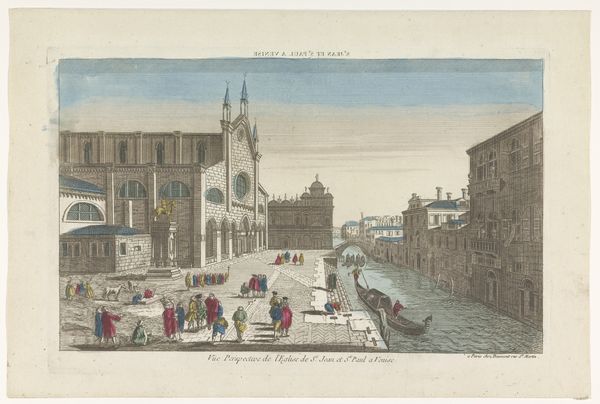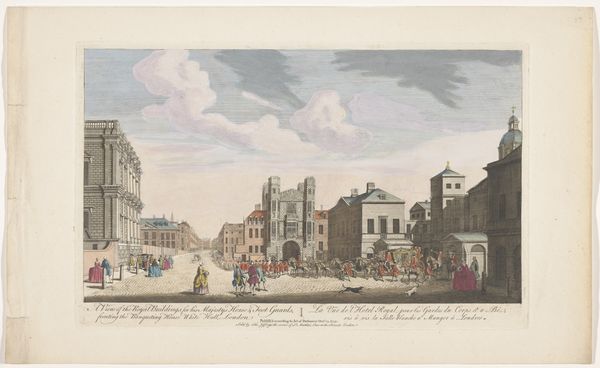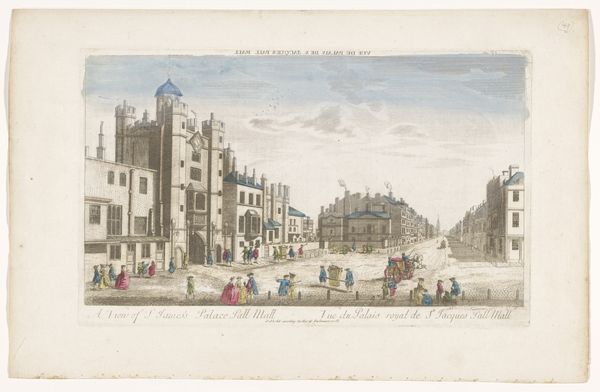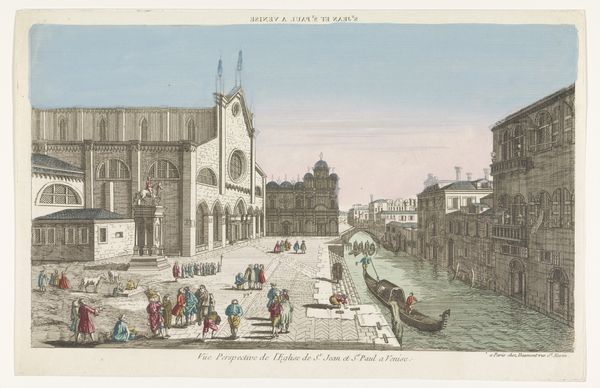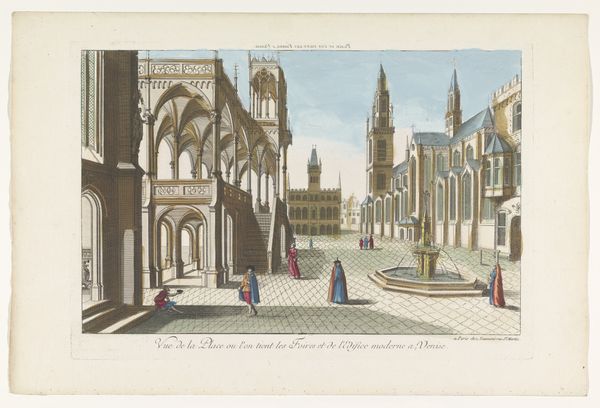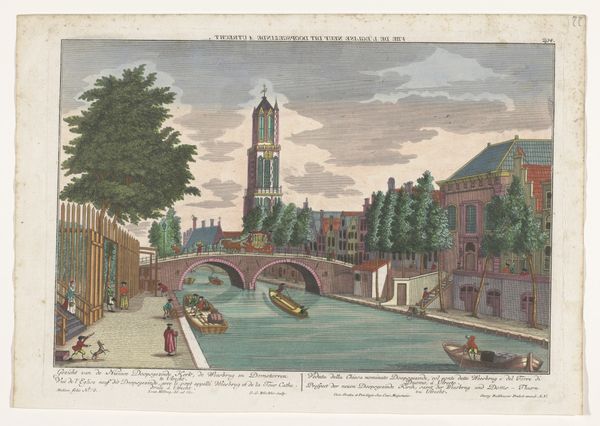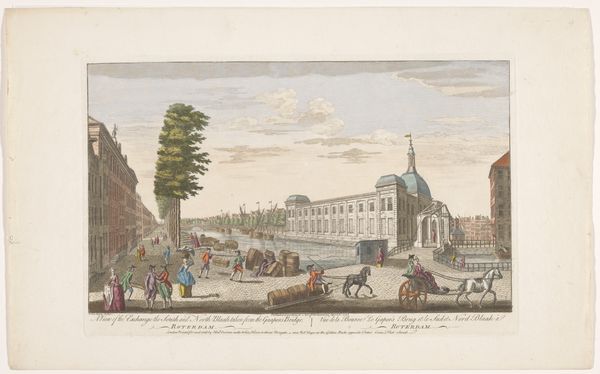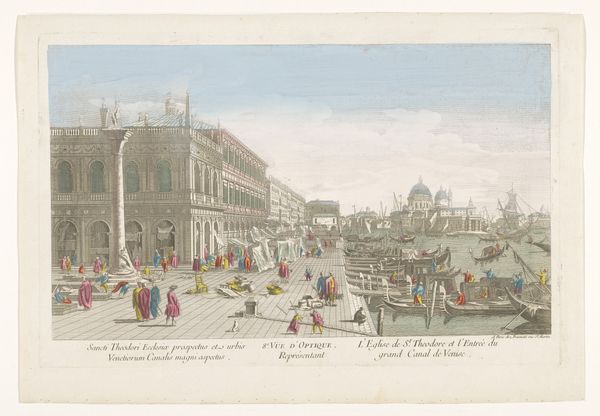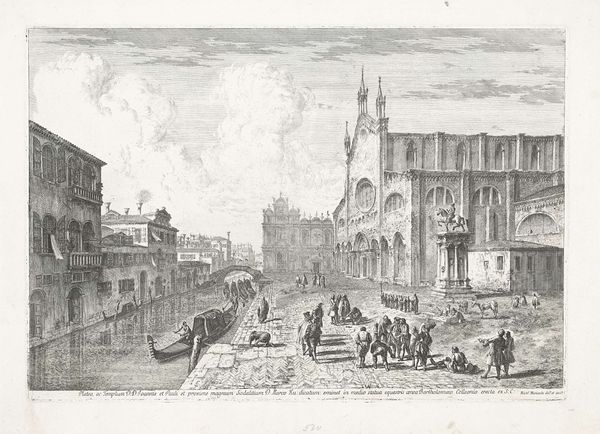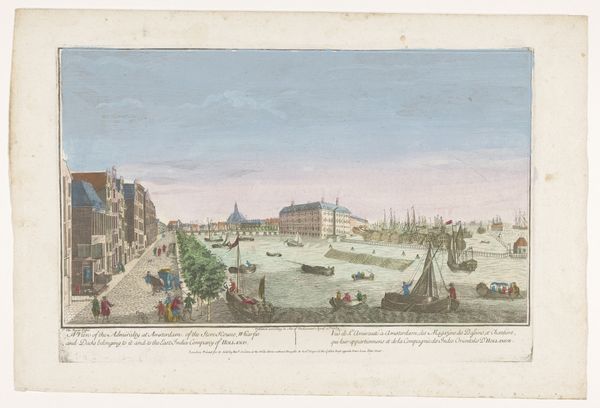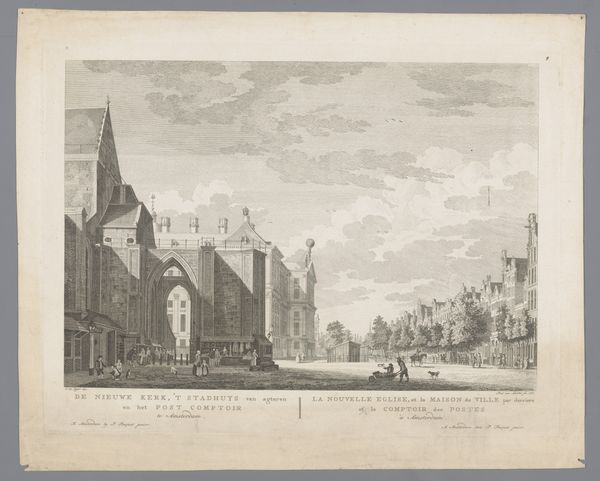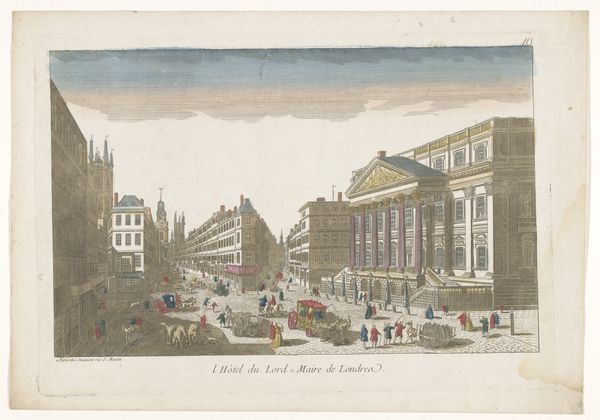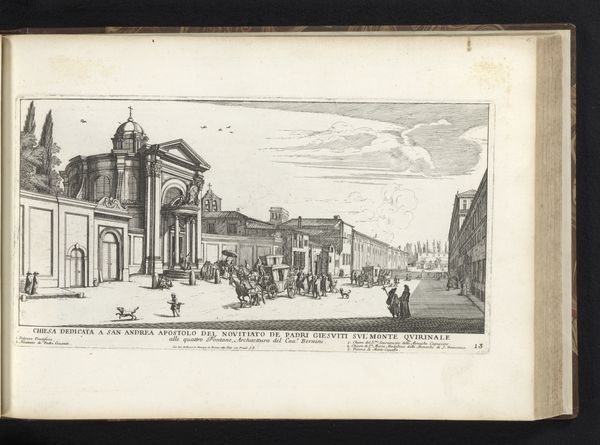
drawing, print, watercolor
#
drawing
#
venetian-painting
#
baroque
# print
#
landscape
#
perspective
#
figuration
#
watercolor
#
line
#
cityscape
#
watercolour illustration
#
academic-art
Dimensions: height 271 mm, width 422 mm
Copyright: Rijks Museum: Open Domain
Curator: This delicate watercolor illustration, titled "Gezicht op de kerk Santi Giovanni e Paolo te Venetië", offers us a glimpse of Venice, possibly from 1749, rendered by Robert Sayer. What are your initial thoughts? Editor: It feels… meticulously crafted, almost sterile. Look at the lines; they're incredibly precise. I wonder what sort of labor went into creating something like this? Was it intended as a purely aesthetic piece or something more utilitarian, like a guide for tourists perhaps? Curator: It certainly reflects a precise understanding of perspective, fitting for the era's interest in depicting space accurately. But observe how the church of Saints John and Paul dominates the composition. Notice, too, the figures populating the square; each element carefully placed within a symbolic hierarchy, echoing Venice’s own established social structure. Editor: Yes, I see it. The rendering of each figure, their clothing – probably dictated by social class and available textiles. The materiality of their lives, essentially. And how interesting to see what looks like contemporary work being done right in front of a grand symbol of the city's history. The creation of textiles was an enormously important trade, and surely a lucrative source of revenue for Venetian merchants and artisans alike. Curator: Precisely! Even the gondolas on the canal whisper of Venice's maritime power, while the church signifies the spiritual heart of the city. This intertwining of secular power and spiritual authority is powerfully visualized through iconographic codes easily understood by contemporary audiences. It's about conveying specific ideas as much as visual pleasure. Editor: That is where my attention is drawn to too – the way this drawing becomes more than a depiction and turns into something almost instructional in how it views society, labor and craft within it. Curator: It invites a contemplation on faith, power, and civic pride intertwined. Editor: While, I agree, also reminding us of how things are made and, maybe more significantly, of how much work that making entails. Curator: Well, this visual approach makes the historical context come alive, giving an extra layer of consideration beyond mere aesthetics. Editor: Indeed. It's a beautiful thing in itself, of course, but much of its value now, centuries later, exists in how we use our understanding to explore it and what it stands for.
Comments
No comments
Be the first to comment and join the conversation on the ultimate creative platform.
